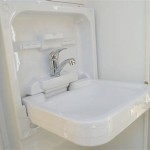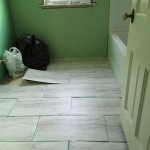How Do You Remove an Old NuTone Bathroom Fan Housing?
Removing an old NuTone bathroom fan housing can seem daunting, but with the right tools and approach, it can be a manageable DIY project. This article provides a step-by-step guide to safely and effectively remove your old NuTone unit, preparing the way for a replacement.
Safety Precautions
Safety should always be the top priority when working with electrical components. Before beginning any work, take the following precautions:
- Turn off the power to the bathroom fan at the circuit breaker. Double-check the power is off by flipping the fan switch.
- Use a non-contact voltage tester to ensure the wires are not live.
- Wear safety glasses to protect your eyes from dust and debris.
- Wear a dust mask, especially if the housing is old and likely to contain dust and debris.
Accessing the Fan Housing
Accessing the fan housing typically requires working from below in the bathroom and above in the attic or crawlspace. Ensure adequate lighting in both areas.
- Locate the fan's access panel in the ceiling. This panel may be held in place by screws, clips, or friction. Carefully remove the panel to expose the housing.
- If working in an attic or crawlspace, locate the fan housing from above. This will give you a better perspective of the housing's mounting system and wiring.
Disconnecting the Wiring
Disconnecting the wiring is a critical step. Exercise caution and ensure the power is off.
- Carefully remove the wire nuts connecting the house wiring to the fan wiring. Take note of the wire connections (typically black to black, white to white, and green or bare copper to ground).
- Label the wires with electrical tape if needed to aid in reconnecting the new fan.
- If the wiring is old or brittle, consider replacing it as part of the new fan installation.
Detaching the Housing from the Joists
NuTone fan housings are typically secured to the ceiling joists with screws, clips, or a combination of both.
- Locate the screws or clips holding the housing to the joists.
- Use a screwdriver or drill to remove the screws. Pliers may be necessary to remove clips. A reciprocating saw with a metal-cutting blade can be used to cut stubborn nails or metal straps if present. Ensure the power is off and you are using extreme care. Exercise caution to avoid cutting existing wiring or plumbing.
- If the housing is difficult to remove, have a helper assist in supporting the housing while you detach it.
- Some older installations may utilize caulk or adhesive to seal the housing. A utility knife can be helpful in breaking this seal.
Lowering the Housing
Once the housing is detached, carefully lower it from the ceiling. Take precautions to avoid damaging the surrounding drywall or ceiling finish.
- If working from below, support the housing while removing the final fasteners.
- If working from above, gently lower the housing through the access hole.
- If the housing is heavy or awkward to handle, enlist a helper to assist in lowering it safely.
Disconnecting the Ductwork
After the housing is removed, disconnect the ductwork connected to the fan.
- Most NuTone fans use flexible ductwork connected with foil tape or clamps. Carefully remove the tape or loosen the clamps to detach the ductwork.
- If the ductwork is rigid metal, you may need to use metal snips or a reciprocating saw to cut the ductwork. Ensure the area is clear of debris and any insulation is pulled back to prevent fire hazards.
- If the ductwork is damaged or deteriorated, consider replacing it as part of the new fan installation.
Disposing of the Old Housing
Properly dispose of the old fan housing according to local regulations.
- Check with your local waste management service for specific guidelines on disposing of electronic waste.
- Some metal recycling centers may accept the metal components of the housing.
Preparing for New Installation
With the old housing removed, the space is ready for the installation of a new bathroom fan. This is a good opportunity to inspect the existing wiring and ductwork and make any necessary repairs or upgrades.
- Ensure the electrical junction box is securely mounted and in good condition.
- Inspect the existing ductwork for any damage or obstructions. Consider upgrading to a larger diameter duct if the existing ductwork is restrictive.
- Insulate the ductwork to improve energy efficiency and reduce noise.

Not Sure How To Remove Old Bathroom Fan Install New One Doityourself Com Community Forums
Practical Sustaility Swap Out Your Old Inefficient Bathroom Fans Sunset Green Home

Removing Cleaning Old Kitchen Exhaust Fan Doityourself Com Community Forums

Remove Install A Bathroom Fan Grille In 1 Min

How To Replace A Bathroom Exhaust Fan Without Attic Access 12 Step Guide Home Inspector Secrets
Nutone S Qt80nb Bath Fan Repair Replace Or Upgrade Options

Removing Cleaning Old Kitchen Exhaust Fan Doityourself Com Community Forums

How To Remove Nutone Bathroom Fan Light Cover 2024 Guide Home Inspector Secrets
Bath Exhaust Replacement Motor Diy Home Improvement Forum
How To Remove A Nutone Bathroom Fan Light Cover Quora







